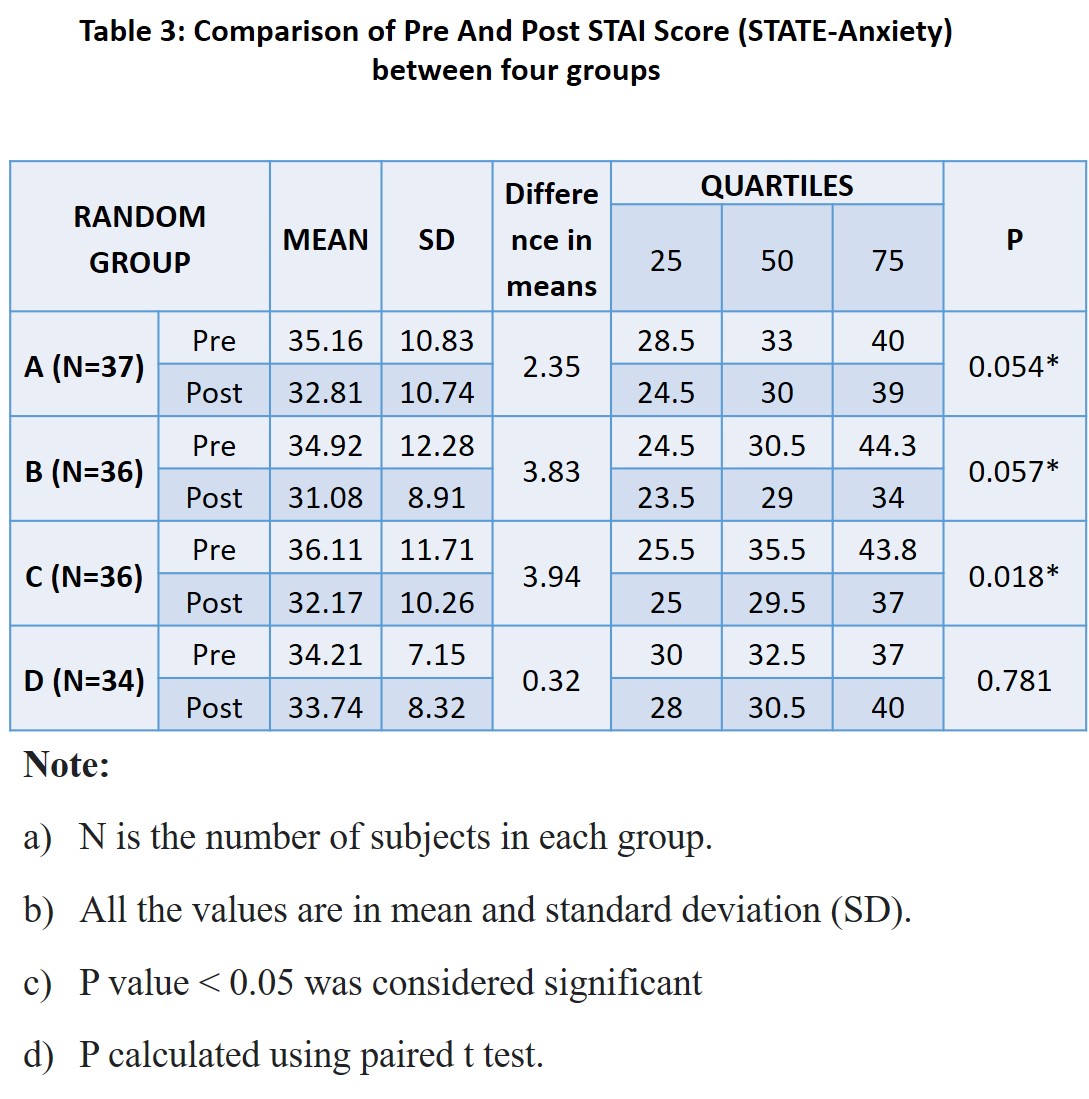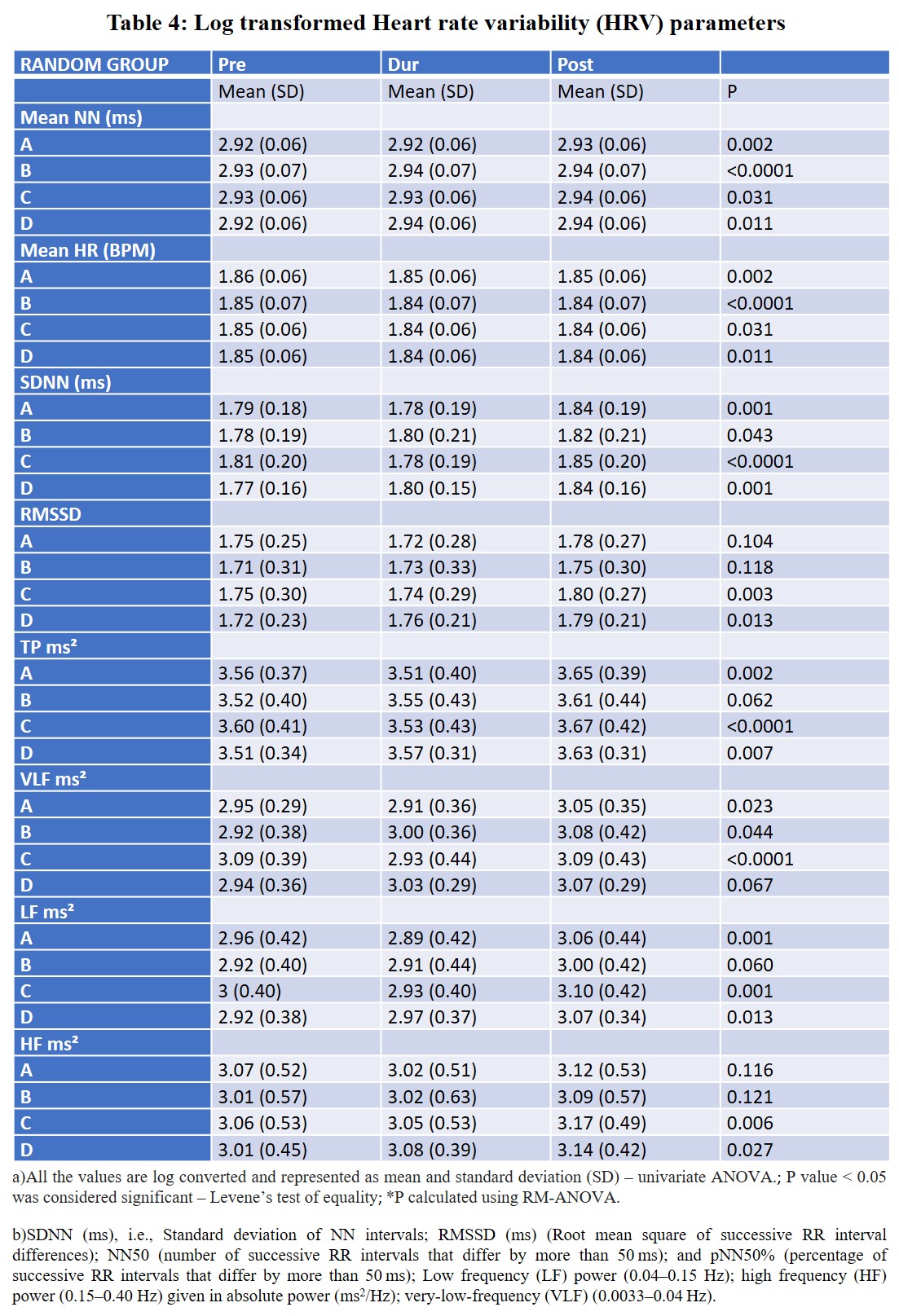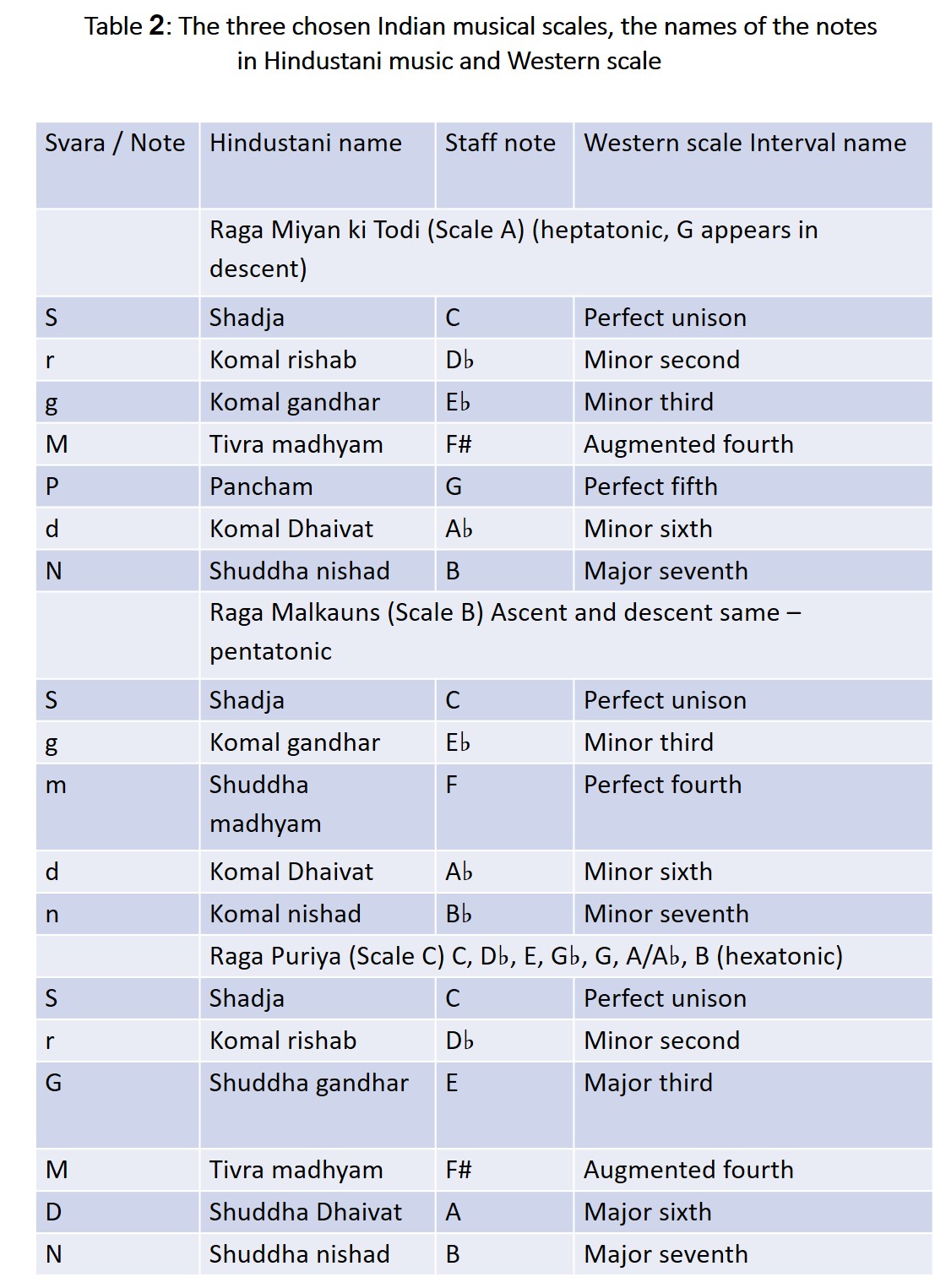Introduction: Music plays an integral part in our lives, in causing relaxation of body and the mind. Scientific evidence highlight beneficial influences of western music, but, unfortunately, evidence regarding the health benefits of Indian music is extremely meager. In this era of translational research, we studied the effect of Indian music melodic scales on health with special reference to electrophysiological parameters. As a part of Sama Veda, Gandharva Veda, various ragas & their health benefits have been enlisted. Notes description-Table 1;Ragas in (1,2).Objectives: To evaluate the acute effect of three selected ragas of Hindustani (Indian) music on, electrophysiological parameters [Heart rate variability (HRV) and Electroencephalography (EEG)] and to assess the relaxation effect of these ragas on Blood pressure (BP), salivary stress markers and anxiety. Method: After ethical clearance, a randomized controlled triple-blind trial with 3 ragas to 3 intervention groups (A-raga Miyan ki Todi,B-raga Malkauns & C-raga Puriya -n=35 in each;Table 2) and a control group (group D,n=35) was conducted. The music was alaap played on flute without percussion instruments for 10 minutes while the control group heard predominant silence with some natural sounds interspersed once every 2 minutes for 30 seconds. EEG, Event-related potential (P300), HRV analysis, BP & anxiety were tested prior to, during & after 10 minutes of music intervention & results computed & analyzed using ANOVA and other appropriate statistical methods using SPSS software. P≤0.05 was considered statistically significant.Results and Conclusions: State anxiety reduced significantly [Table 3] with maximum reduction using raga Puriya (3.94 reduction from baseline), followed by raga Malkauns (3.83) and raga Miyan Ki Todi (2.35). Insignificant changes were observed in BP. On HRV analysis, raga Miyan ki Todi and Puriya caused arousal effect [significant drop in SDNN,RMSSD, TP (ms2), VLF (ms2), LF (ms2), HF (ms2)] during the intervention and significant relaxation (increase in above parameters) after the intervention. Raga Malkauns, similar to the control group, caused a sustained rise in parasympathetic parameters of HRV over 30 minutes [Table 4]. A significant reduction was observed with all four interventions in salivary alpha-amylase. On EEG, raga Puriya caused a significant increase in delta & theta after the intervention [Figure 1], raga Miyan ki Todi showed a significant drop in Alpha, Beta1 during the intervention, whereas raga Malkauns showed a significant increase in theta after the intervention and reduced Alpha, Beta1 & Beta2 during the intervention. P300 amplitude reduced significantly with raga Puriya during the intervention, with more reduction after intervention with raga Malkauns.Conclusions: Indian Music produced a relaxation response similar to western classical music. Among the different Hindustani ragas, raga Puriya was found to be beneficial based on anxiety reduction, parasympathetic response after intervention, and theta power rise during the intervention. Nevertheless, Raga Miyan ki Todi and Malkauns also showed a relaxation response electrophysiologically, though the timing was different, one being after the intervention, while the other was during, respectively. Thus, further studies are highly recommended to be taken up, in order to build a scientific foundation for the use of Indian music in medicine.
Future Physiology 2021 (Virutal) (2021) Proc Physiol Soc 47, PC69
Poster Communications: SCIENTIFIC ANALYSIS OF ELECTROPHYSIOLOGICAL EFFECTS AND ANXIETY REDUCTION WITH THREE DIFFERENT INDIAN MELODIC SCALES – A RANDOMIZED CONTROL TRIAL
KIRTHANA KUNIKULLAYA U1, RADHIKA KUNNAVIL2, JAISRI GOTURU1, V S PRAKASH3, N S MURTHY1
1 M S Ramaiah Medical College, MSR Nagar, MSRIT Post, Bangalore, Karnataka, India , Bengaluru, India 2 ESI Post Graduate Institute of Medical Science and Research, 41st Cross Rd, Rajajinagar, Bangalore, Karnataka, India , Bangalore, India 3 M S Ramaiah Memorial Hospital, MSR Nagar, MSRIT Post, Bangalore, Karnataka, India , Bangalore, India
View other abstracts by:
Where applicable, experiments conform with Society ethical requirements.





